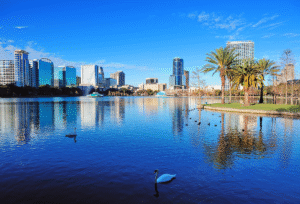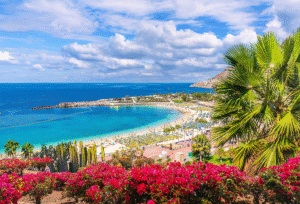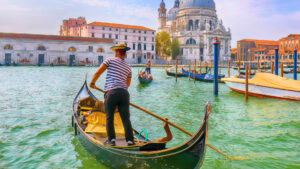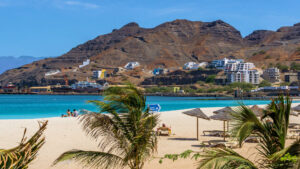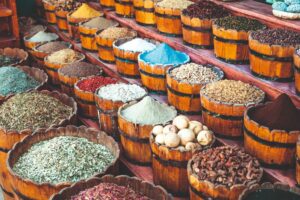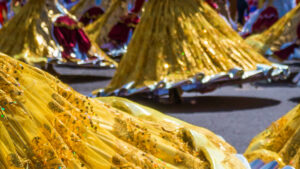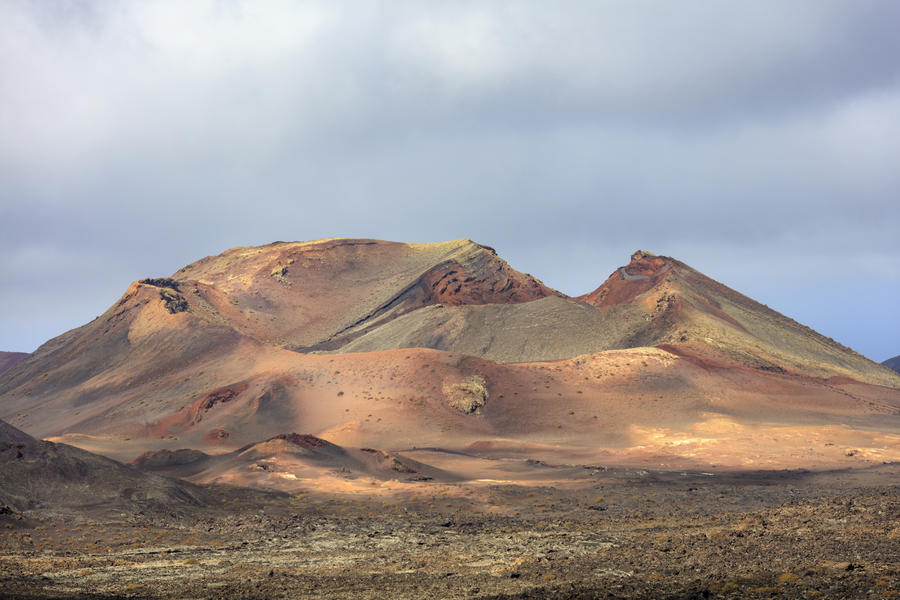
On a holiday to Lanzarote you will be greeted by a small volcanic island in the Atlantic Ocean, boasting a wonderful sub-tropical climate. The 18th century saw a devastating volcanic eruption that created a lunar landscape with many mini volcano cones, craters and lava valleys. Since then the area has evolved to include many volcanic attractions including wonderful vineyards and even a 600-seat concert auditorium.
With an atmosphere and beauty unique in the Canary Islands, Lanzarote is a popular spot with tourists who not only get to bask in the everlasting sun, but also get to experience the splendour of the volcanic landscape. Here’s 31 facts you may not know about the island’s volcanoes!
![]()
The landscape
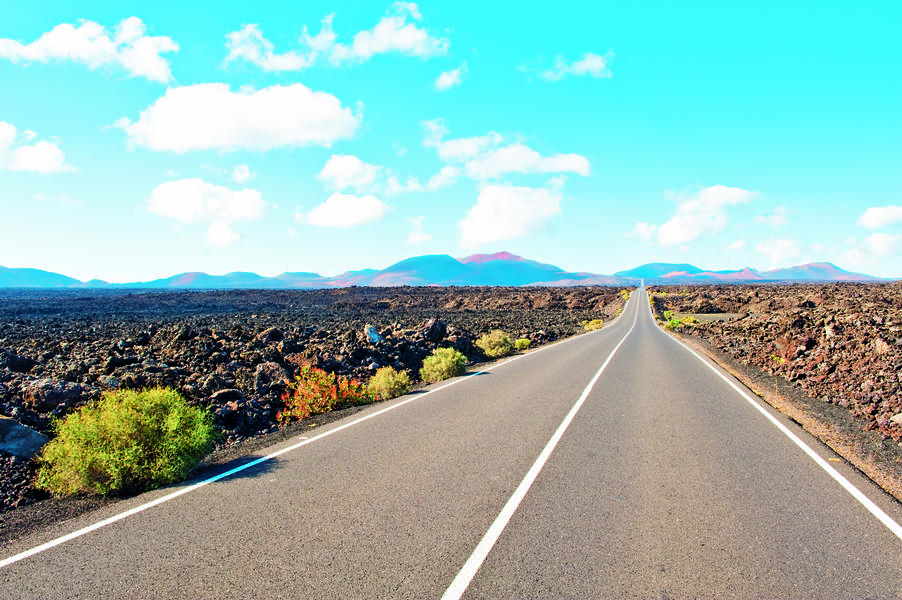
- Lanzarote is sometimes referred to as the Island of the 1,000 volcanoes.
- Ongoing volcanic eruptions between 1730 to 1736 destroyed 26 villages and hamlets, as well as prime farmland.
- Six years of eruptions created a unique lunar landscape covered in craters, canyons, valleys of solidified lava, and many small volcano cones.
- Lying among and around the volcanoes are charming villages, green valleys and wonderful beaches with 140,000 residents.
- This stunning landscape was featured in films such as Almodovar’s Los Abrazos Rotos or Broken Embraces, When Dinosaurs Ruled the Earth, Moby Dick, as well as Doctor Who!
- Discover El Golfo lagoon. Located on the island’s west coast, you need to walk past a rocky lava coast before coming across this stunning emerald green-coloured lagoon backed by red cliffs. It really is like being on another planet.
- Lanzarote has many stunning golden beaches to enjoy the sunny clime, but spending time on the black sand beach of Playa Quemada is a must. Black sand is only found in volcanic destinations on trips to Santorini, Greece and the Canary Islands to name a few.
- The eruptions mean that Lanzarote is an ideal place for cross-country mountain biking. You can cycle through the unusual landscape of lava and craters on tracks and goat paths. The majority of the tours begin in Puerto del Carmen, however, whichever route you choose, there are some great downhill runs.
Caves
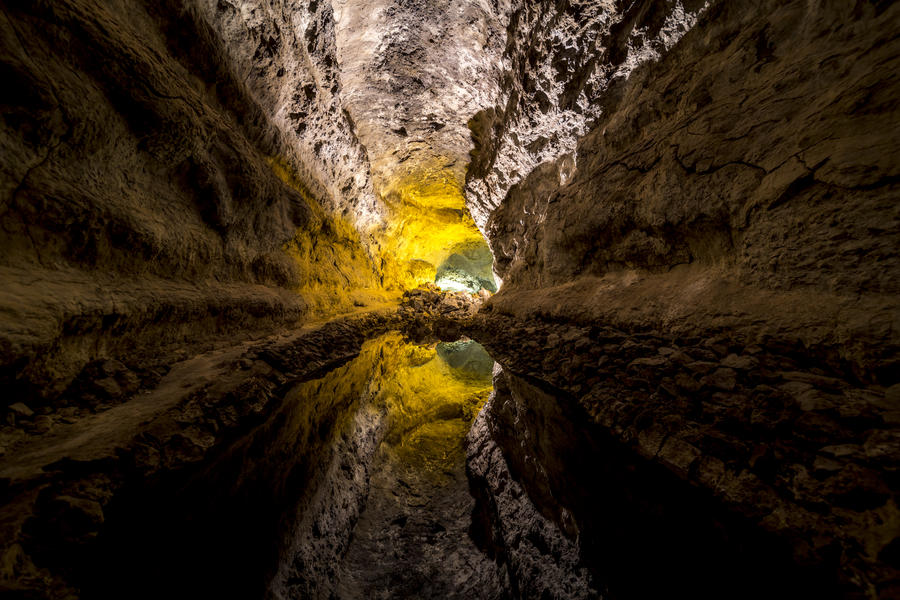
9. Los Jameos del Agua caves were formed when Monte Corona volcano erupted 4,000 years ago.
10. Architect Cesar Manrique has since transformed the cave into a 600-seat auditorium with a restaurant, bar and gardens.
11. The acoustics are fantastic and many concerts are held here including the Visual Music Festival of Lanzarote.
12. The cave system is part of the Cueva de los Verdes lava tube known as the Tunnel of Atlantis, which is the largest underwater volcanic tunnel in the world at 1,500 meters long. You can take tours of the caves.
13. Following the eruption, the tubes were created when molten lava continued flowing as the surface hardened, which led to the formation of the tubes, which go down under the Atlantic Ocean.
Timanfaya
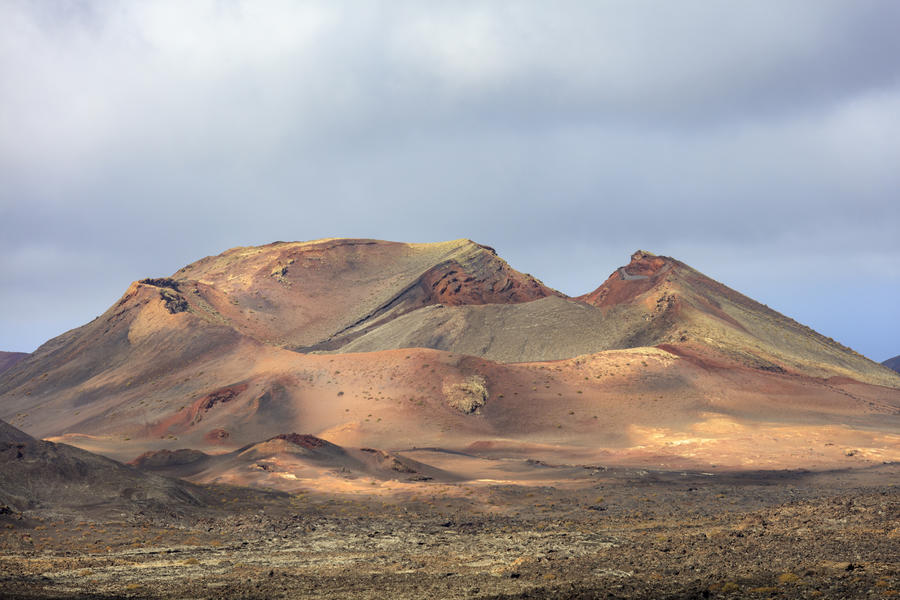
14. Timanfaya, which is now a National Park, is one of the island’s most spectacular sites. Still active it consists of a series of streaming volcanoes and lava fields, with a visitor centre and exhibition, where you can find out more about the volcanic activity on the island.
15. Given the incredible lunar landscape of the Park, it’s reputed that Apollo astronauts looked at pictures of the area to get an idea of what the surface of the Moon might look like.
16. The Park is an UNESCO designated Biospheric Reserve. It is completely made up of volcanic soil and temperatures reach a scorching 600°C just 10 meters below the surface.
17. The heat coming off just nine layers of volcanic rocks is used to cook steaks and fish for tourists at the Timanfaya Park.
18. Take a four-hour hike to experience the multi-coloured volcano cones made up of red, yellow, orange and blue tints as well as viewing some fascinating rock formations. Life forms such as fig trees and ferns are also springing out of the black soil here.
19. There are many ways to explore the Park, and a memorable camel ride is another, more unusual option.
20. Timanfaya and Los Volcanes Nature Reserve can claim the accolade of being areas with the highest concentration in Spain. With 25 in 10,000 hectares.
Animals and nature
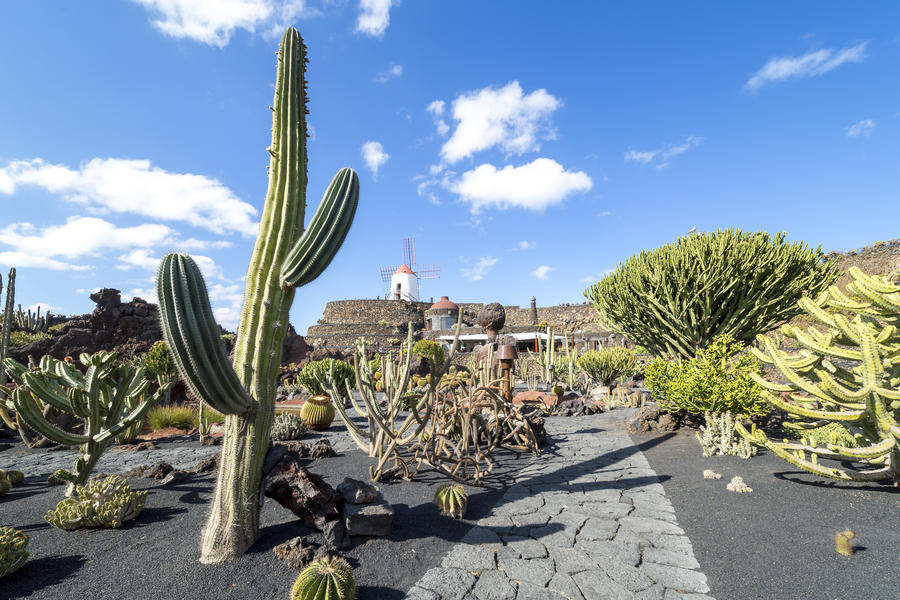
21. The north of the island offers up the green valley of Haria known as ‘the valley of one thousand palms’, offers a refreshing contrast to ashy Timanfaya.
22. Built in an old quarry in the north of the island is the Cactus Garden, or Jardin de Cactus. The garden, also designed by Cesar Manrique, an architect at the forefront of eco design benefiting tourists, is in the shape of an amphitheatre. Aside from being home to more than 10,000 cacti from across the world, lava rock and ash provide a wonderful backdrop to show off the cactus.
23. Unusual endemic animals include Gallotia lizards and the blind albino cave crabs found in the underground saltwater lagoon in the Jameo Chico cave at Los Jameos del Agua.
24. The eruptions, which were the longest and most powerful ever recorded, altered the nature and wildlife of the island.
25. Around the island over 500 types of plants have acclimatized to the sub-tropical weather and lack of water, these include ferns, wild olive trees and Canary Island date palms.
26. Aside from birds and reptiles, few vertebrate species exist on the island. The lack of wildlife is due to the climate and limited water.
27. The black volcanic earth of Lanzarote creates giant potatoes, which are included in most traditional food including the national dish Mojo potatoes. Also known as Canarian wrinkled potatoes, it consists of baked potatoes with spicy green and red sauces.
Wine
![]()
28. When the main volcanic eruptions occurred, a third of the farming land was covered with grit. Islanders soon realised that the fine black ash could be utilised, so they transformed the land to make it into one of the best wine growing areas in the Canary Islands.
29. You can visit the La Geria wine-producing region, which lies at the foot of numerous volcanoes. The area covers 3,000 hectares and, incredibly, churns out somewhere between five and six million grapes each year.
30. You can find out more about the unique ways they cultivate and protect the vines at the El Grifo Wine Museum, then try Vulcano de Lanzarote, a wine beloinging to one of the best-loved and highly regarded producers, Malvasia.
31. One of the ways they protect the grapes in this unusual black landscape is by building small, curved stonewalls around each vine, which are grown in shallow pits. The walls also aid the vines in harvesting due and rainfall.
Why not visit these natural landmarks in person with a holiday to Lanzarote?
You may also like
Canary IslandsLanzarote
